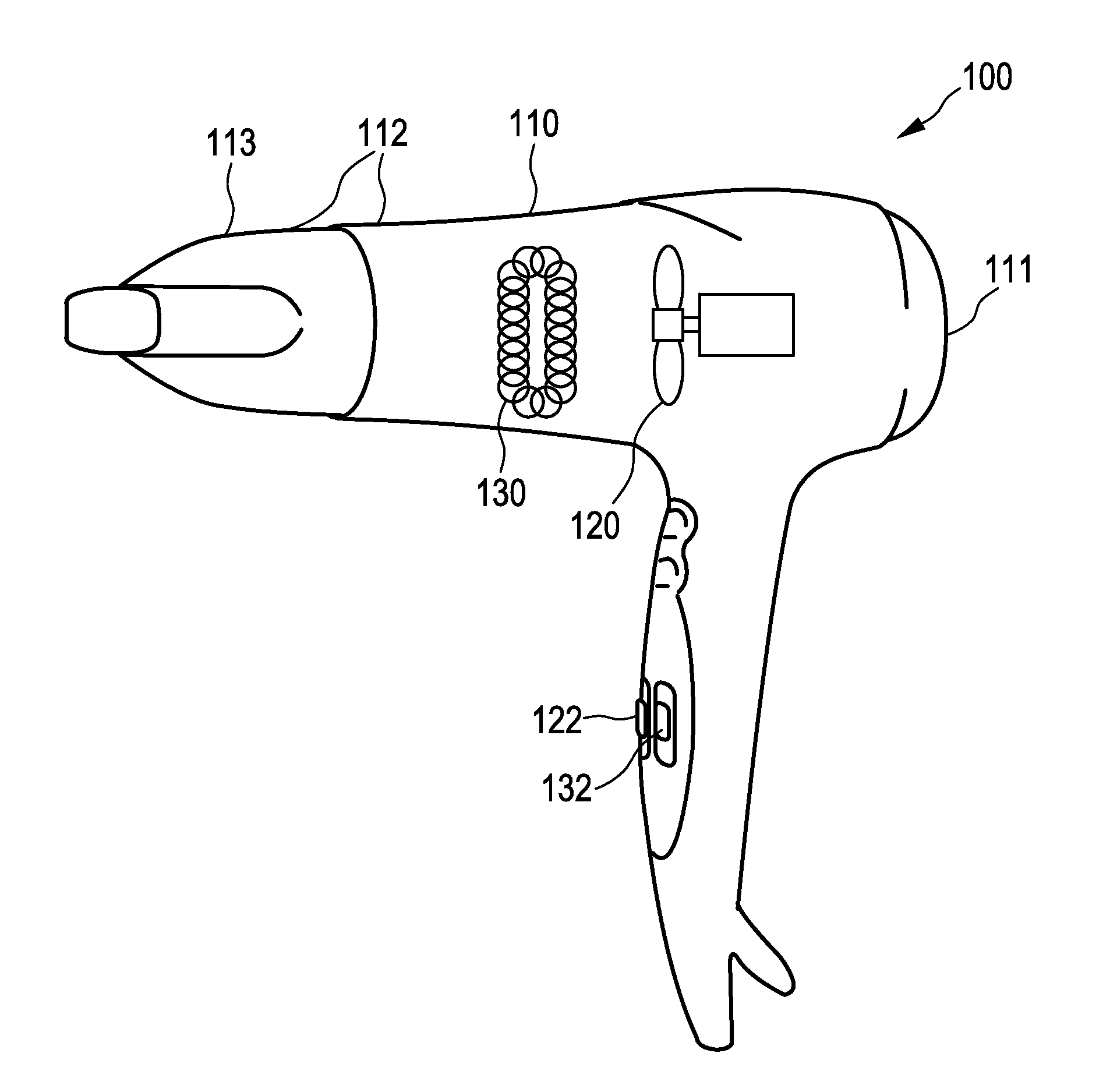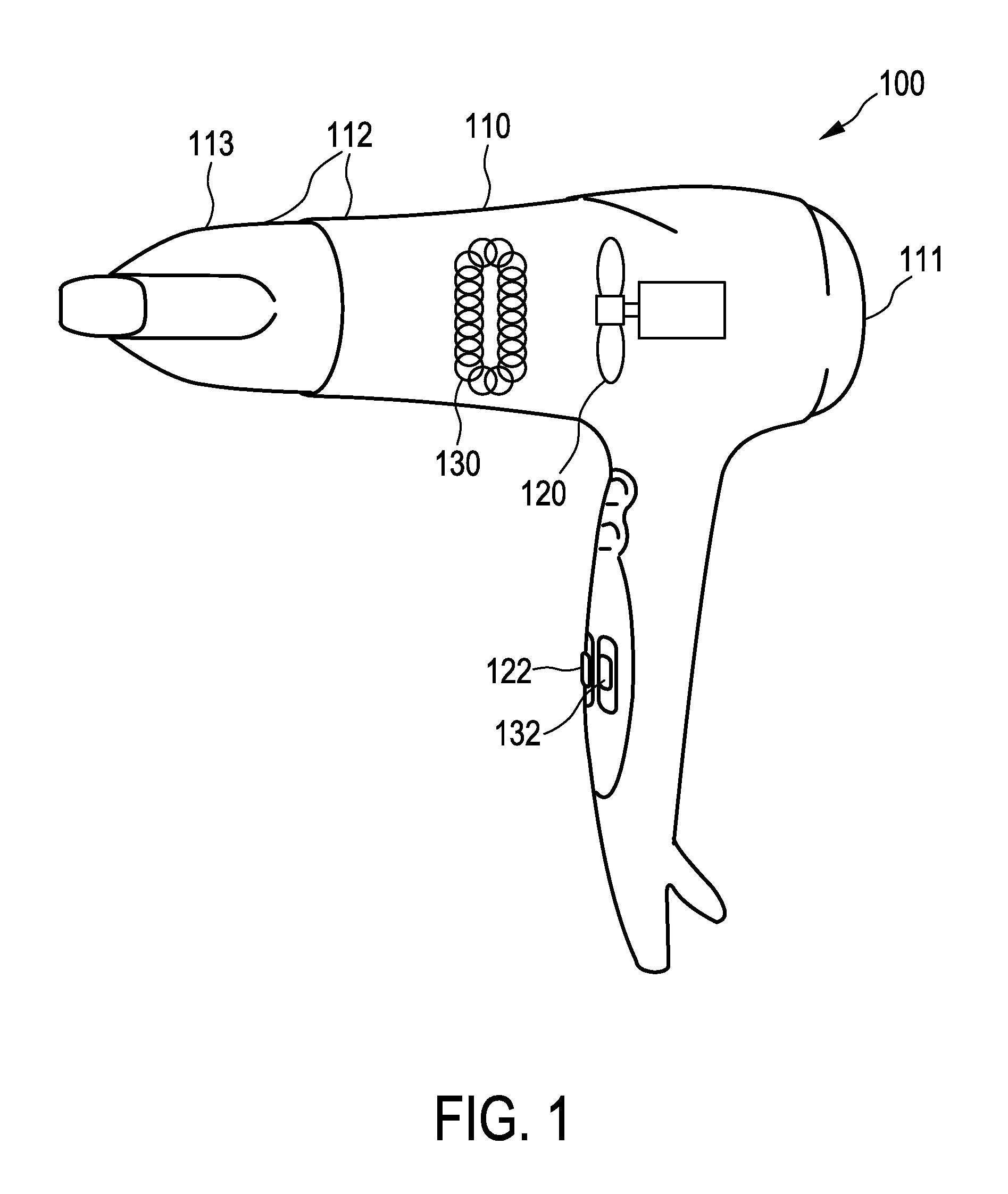Hair dryer with air outlet arrangement
a dryer and air outlet technology, applied in the field of hair dryers, can solve the problems of hair damage, hair damage, actual burning,
- Summary
- Abstract
- Description
- Claims
- Application Information
AI Technical Summary
Benefits of technology
Problems solved by technology
Method used
Image
Examples
Embodiment Construction
[0039]FIG. 1 shows an electrical hair dryer 100 comprising a housing 110 with an air inlet 111 and an air outlet arrangement 112. In this particular embodiment the air outlet arrangement 112 also features a nozzle 113. The nozzle 113 is optional. In the housing 110 there are a fan 120 and a heating element 130. The fan 120 generates a flow of air from the air inlet 111 to the air outlet arrangement 112. Any type of air flow generating device can be used as a fan. The heating element 130 heats the flow of air. Different types of heating elements are available for example coils of wire with high electric resistivity such as nichrome wires, infrared heaters and ceramic heating elements. The fan speed is controlled via a fan control switch 122 that allows to set the fan speed. The heating power of the heating element 130 is controlled via a heat control button 132. In this embodiment it is possible to control fan speed and heating power independently from each other. However, in a diffe...
PUM
 Login to View More
Login to View More Abstract
Description
Claims
Application Information
 Login to View More
Login to View More - R&D
- Intellectual Property
- Life Sciences
- Materials
- Tech Scout
- Unparalleled Data Quality
- Higher Quality Content
- 60% Fewer Hallucinations
Browse by: Latest US Patents, China's latest patents, Technical Efficacy Thesaurus, Application Domain, Technology Topic, Popular Technical Reports.
© 2025 PatSnap. All rights reserved.Legal|Privacy policy|Modern Slavery Act Transparency Statement|Sitemap|About US| Contact US: help@patsnap.com



